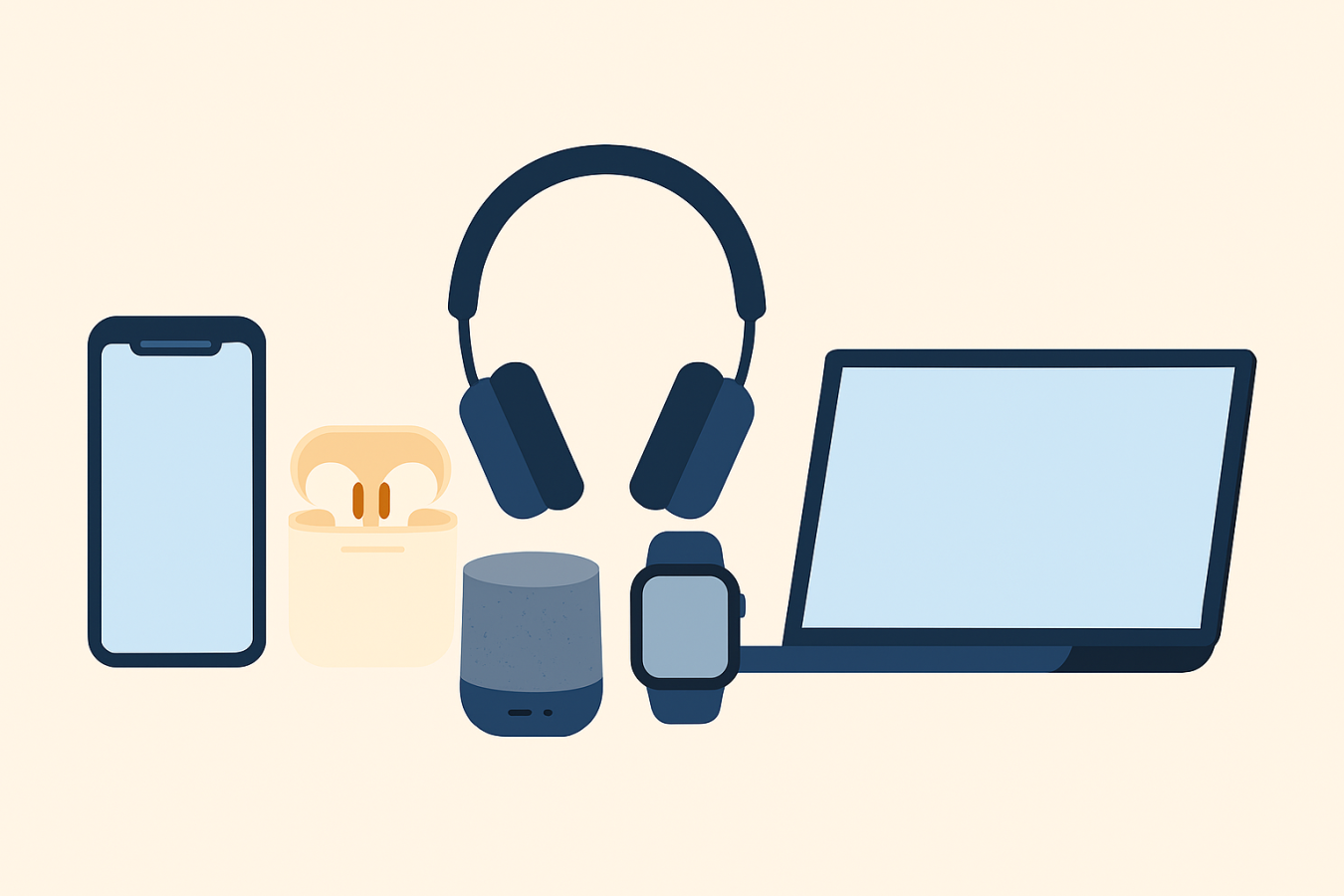With endless tech options, the smartest choice starts with your daily routine. This guide shows how to match gadgets to your needs—communication, productivity, health, entertainment, and home—so you buy tools that genuinely make life easier.
🧭 Start with your daily needs
- Communication: Calls, messaging, video chats, and navigation.
- Productivity: Writing, spreadsheets, meetings, creative work.
- Health & fitness: Activity tracking, heart rate, sleep insights.
- Entertainment: Streaming, gaming, audiobooks, reading.
- Home comfort: Lighting, climate control, speakers, routines.
Tip: Write two lists—must-haves (daily essentials) and nice-to-haves (bonus features). Choose devices that satisfy the must-haves first.
📱 Smartphones
- Best for: All-in-one communication, apps, and navigation.
- What to look for: Battery life, camera quality, storage, OS ecosystem (iOS vs Android), and 5G/Wi‑Fi 6 support.
- Practical picks: Mid‑range phones often deliver best value—flagship cameras without paying for niche extras.
- Longevity: Prefer brands with 4–7 years of OS/security updates.
💻 Laptops and tablets
- Best for: Work, study, creative tasks, and travel.
- Laptops: Balance CPU/RAM/storage with portability; consider battery life (8+ hours) and comfortable keyboards.
- Tablets: Good for reading and light work; add a keyboard case and stylus for note‑taking and sketching.
- Compatibility: Ensure your apps (Office, Adobe, dev tools) run well on the device and OS.
⌚ Smartwatches and fitness trackers
- Best for: Activity, health metrics, quick notifications, and on‑the‑go controls.
- Sensors: Heart rate, SpO2, GPS, sleep; athletes may want training readiness and advanced recovery metrics.
- Battery: Trackers often last days; full smartwatches may need daily charging.
- Ecosystem: Pair watch brand with your phone for full features (messages, payments, apps).
🎧 Headphones and earbuds
- Use cases: Commuting (ANC), calls (clear mic), workouts (secure fit), focus (comfort).
- Sound & comfort: Try before you buy; ear shape matters. Over‑ear for long sessions, earbuds for portability.
- Features: ANC, transparency mode, multi‑point pairing, water resistance (IP ratings).
- Battery: Earbuds: 5–8 hours per charge; over‑ear: 20–50+ hours.
🏠 Smart home devices
- Best for: Convenience—lights, thermostats, plugs, speakers, cameras.
- Compatibility: Choose devices that support your assistant (Google, Alexa, Siri) and Matter/Thread for cross‑brand interoperability.
- Setup: Use scenes/routines (e.g., “Good morning” lights + thermostat + news briefing).
- Privacy: Prefer local control options and clear data policies; disable microphones when not needed.
💡 Key factors to compare
- Budget: Set a ceiling; mid‑range often hits the value sweet spot.
- Ecosystem: Staying within one platform improves syncing, accessories, and support.
- Battery life: Must cover a full day (phone/watch) or work session (laptop).
- Durability: Build quality, water resistance, cases, and warranties/extended support.
- Connectivity: USB‑C, fast charging, Wi‑Fi 6/6E, Bluetooth 5.x, 5G, and expandable storage if needed.
- Future‑proofing: Long update windows, repairability, and standard ports.
🔒 Privacy and security basics
- Updates: Choose brands with long, timely security updates.
- Permissions: Review app access (location, microphone, contacts) and disable what you don’t need.
- Lockdown: Enable strong passcodes/biometrics and device‑finding features; use encrypted cloud backups.
- Smart home: Change default passwords, update firmware, and use guest networks for IoT devices.
🛒 Smarter shopping tips
- Compare needs vs. specs: Pay for features you’ll use daily, not marketing buzzwords.
- Hands‑on tryouts: Test keyboards, screens, and fit in store; comfort matters.
- Policies: Check returns, warranty coverage, and local repair options.
- Bundles: Look for student/educator discounts, trade‑ins, or accessory bundles to save.
🌟 Final word
The right gadget is the one that fits your day. Start with your needs, choose a supportive ecosystem, favor battery life and durability, and protect your privacy. With those basics, you’ll buy tech that helps—without overpaying or overcomplicating your life.

